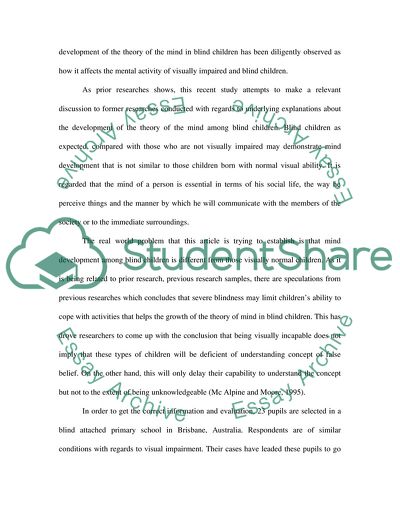Cite this document
(Development of a Theory of Mind in Blind Children Assignment, n.d.)
Development of a Theory of Mind in Blind Children Assignment. https://studentshare.org/sociology/1705494-a-critical-review-of-factors-influencing-the-development-of-a-theory-of-mind-in-blind-children
Development of a Theory of Mind in Blind Children Assignment. https://studentshare.org/sociology/1705494-a-critical-review-of-factors-influencing-the-development-of-a-theory-of-mind-in-blind-children
(Development of a Theory of Mind in Blind Children Assignment)
Development of a Theory of Mind in Blind Children Assignment. https://studentshare.org/sociology/1705494-a-critical-review-of-factors-influencing-the-development-of-a-theory-of-mind-in-blind-children.
Development of a Theory of Mind in Blind Children Assignment. https://studentshare.org/sociology/1705494-a-critical-review-of-factors-influencing-the-development-of-a-theory-of-mind-in-blind-children.
“Development of a Theory of Mind in Blind Children Assignment”. https://studentshare.org/sociology/1705494-a-critical-review-of-factors-influencing-the-development-of-a-theory-of-mind-in-blind-children.


